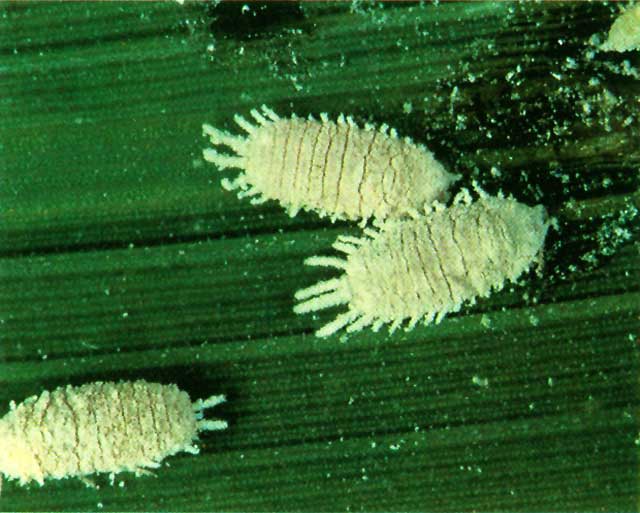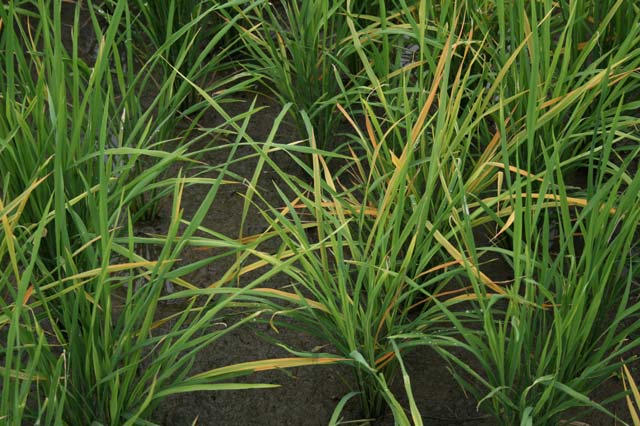Mealy bug
Brevennia rehi (Lindinger)

What it does
Both adult and nymph mealybugs remove plant sap by sucking. This results in curling of leaves and wilting of plants.
Why and where it occurs
Dry periods and the presence of grassy weeds that harbor this insect pest favor the population buildup of the rice mealybug. Likewise, well-drained soils are also suitable for insect pest.
The rice mealybug is found in upland and rainfed environments. It is not common in irrigated rice. It occurs in great number during the rainy season.
The nymphs are active until they molt. They first stay under the body of the adult female and later crawl from plant to plant. They are also dispersed by wind. After dispersal, they stay between the leaf sheath and stem to feed and complete their entire larval development. After molting, the female attaches itself to the plant for life and grows in size.
The adult females remain stationary and feed while the winged adult male flies off.
The insect is abundant from April to early July. Two generations are completed during this period.
 Mealybugs intercept the carbohydrate nutrients with their sucking mouthparts. The resulting damage produces a wilt.How to identify
Mealybugs intercept the carbohydrate nutrients with their sucking mouthparts. The resulting damage produces a wilt.How to identify
Mealybug damage causes:
- wilting
- plant stunting
- yellowish curled leaves
- damaged spots or chakdhora or soorai disease
It does not have a uniform pattern of damage.
Stunting is also a damage symptom caused by other insect pests like root grubs and rice root aphids. To confirm the cause of damage, check for presence of insect:
- hyaline to yellowish to pinkish eggs
- crawlers or nymphs, unwinged pink female adults and winged pale yellow males removing plant sap
- appearance of wax covering the eggs, nymphs and adults that stick on the stem or leaf
Why is it important
When conditions are favorable to the insect, high population of the pest can cause yellowing and stunting of the crop.
Rice mealybug causes heavy losses to crops in Bangladesh, India, and Thailand. High pest density (>100 mealybugs/hill) can cause plants to wilt and die.
Management principles
- Encourage biological control agents: small encyrtid wasps, spiders, chloropid fly, drosophilid, and lady beetles
Content expert: Jo Catindig (email: j.catindig@irri.org)